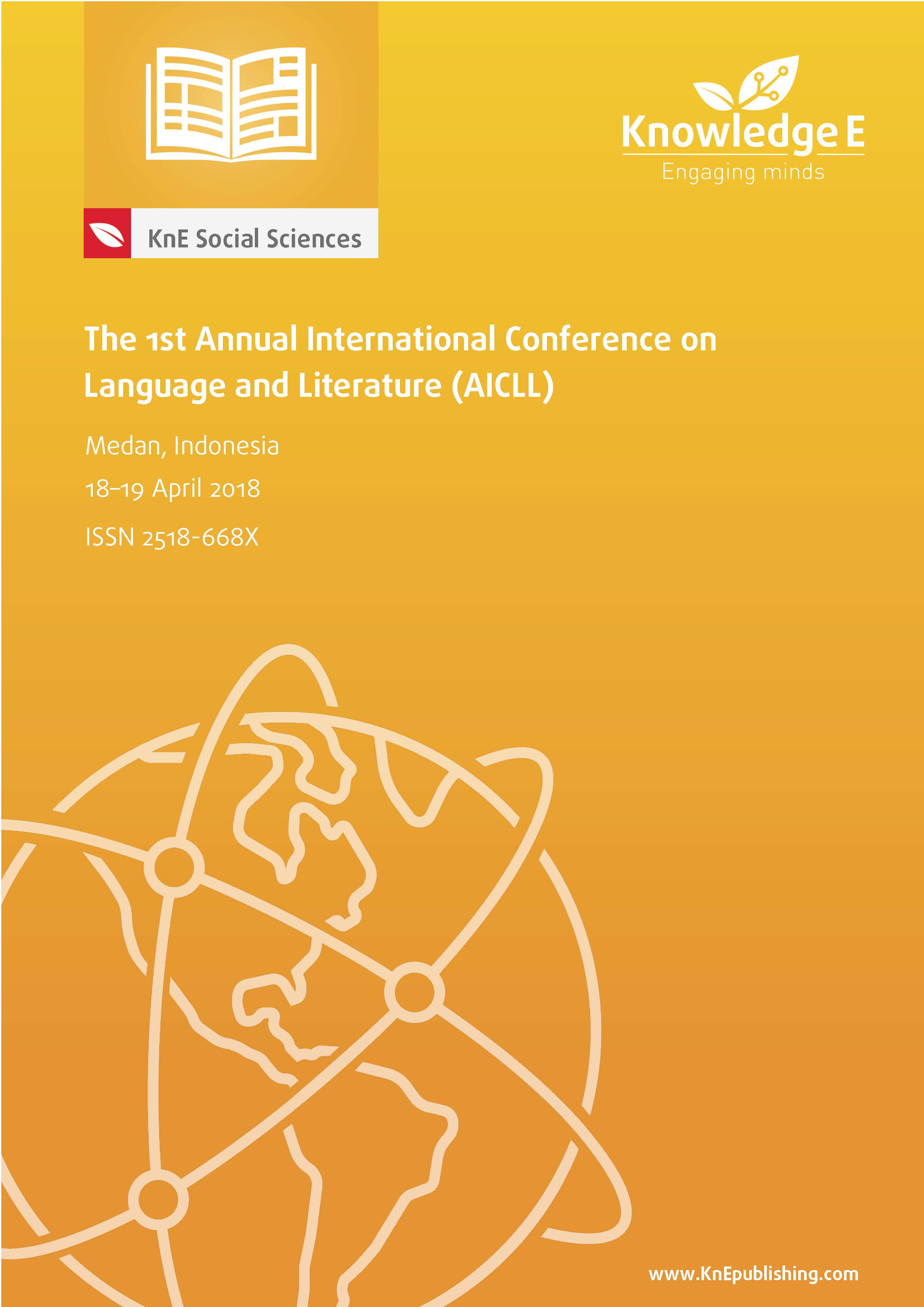Discrimination Behind Nest and Nnest Dichotomy in ELT Pofesionalism
DOI:
https://doi.org/10.18502/kss.v3i4.1982Abstract
This paper argues that the dichotomy between native English-speaking teachers (NESTs) and non-native English-speaking teachers (NNESTs) has resulted in discriminatory practices in English language teaching (ELT) professionalism. Reviewing four studies investigating discrimination in ELT industry in some Asian countries, this literature review reveals that most English as a foreign/second language (EFL/ESL) institutions give preferential treatment to NESTs based on some factors. Nativeness and nationality are among the top factors of discrimination in English teaching positions. Discrepancy in required academic qualification and income also prove that NNESTs have always been discriminated and marginalized in ELT employment. Furthermore, it is also found that racist policy applied by some institutions recruiting White English teachers solely because of their race and privilege. Finally, it can be concluded that some governments and institutions’ policies in recruiting English teachers have played a big role in perpetuating this discrimination against NNESTs by maintaining the ideology of NESTs as superior teachers in theories and practices of ELT.
Keywords: Discrimination, native speakerism, ELT professionalism
References
Allport, G. W. (1954). The nature of prejudice. Cambridge, MA: Addison-Wesley.
Amin, N. (1999). Minority women teachers of ESL: Negotiating white English. In G. Braine (Ed.), Non-native educators in English language teaching (pp. 93-104). Mahwah, NJ: Erlbaum.
Crystal, D. (2003). English as a global language (2
Discrimination. (2015). In Webster’s new world law dictionary. Retrieved January 15, 2018, from http://www.yourdictionary.com/discrimination#law.
Graddol, D. (1997). The future of English. London: The British Council.
Graddol, D. (2001). The future of English as a European language. The European English Messenger, 10(2), 47-50.
Griffith, S. (2015). Teaching English in Asia: Where and how to find ESL jobs. Retrieved from: http://www.transitionsabroad.com/listings/work/esl/ articles/workinasia.shtml
Holliday, A. (2005). The struggle to teach English as an international language. Oxford: Oxford University Press.
Holliday, A. and Aboshiha, P. (2009). The denial of ideology in perceptions of ‘nonnative speaker’ teachers. TESOL Quarterly, 43(4), 669-689.
Jindapitak, N., & Teo, A. (2013). The emergence of world Englishes: Implications for English language teaching. Asian Journal of Social Sciences & Humanities, 2(2), 190- 199.
Jung, M-H. (2014). The hagwon color line: Korean language institutes and their inexcusably racist employment habits. Retrieved from: http://www.koreatimes.co. kr/www/common/printpreview.{}asp?categoryCode=203&newsIdx=151088.
Kachru, B. B. (1985) Standards, codification and sociolinguistic realism: the English language in the outer circle. In R. Quirk and H.G. Widdowson (Eds), English in the world: Teaching and learning the language and literatures (pp. 11-30). Cambridge: Cambridge University Press.
Kachru, B. B. (1986). The alchemy of English: The spread, function, and models in nonnative English. Oxford: Oxford University Press.
Kachru, B. B. (1991). Liberation linguistics and the Quirk concern. English Today, 25, 3-13.
Kirkpatrick, A. (2007). World Englishes: Implications for international communication and English language teaching. Cambridge: Cambridge University Press.
Kubota, R. and Lin, A. (2006). Race and TESOL: Introduction to concepts and theories. TESOL Quarterly, 40(3), 471-493.
Kuo, I. (2006). Addressing the issue of teaching English as a lingua franca. ELT Journal, 60(3), 213-221.
Mahboob, A. and Golden, R. (2013). Looking for native speakers of English: Discrimination in English language teaching job advertisements. Voices in Asia Journal, 1(1), 72-81.
Matsuda, A. (2003). Incorporating world Englishes in teaching English as an international language. TESOL Quarterly, 37(4). 719–729.
McKay, S. L. (2002). Teaching English as an international language. New York, NY: Oxford University Press.
Medgyes, P. (2001). When the teacher is a non-native speaker. In M. Celce-Murcia (Ed.), Teaching English as a second or foreign language (3
Norton, B. (1997). Language, identity, and the ownership of English. TESOL Quarterly, 31(3), 409-429.
Onwuegbuzie, A. J. & Frels, R. (2016). Seven steps to a comprehensive literature review: A multimodal and cultural approach. Thousand Oaks, CA: SAGE.
Quirk, R. (1985) The English language in a global context. In R. Quirk and H. G. Widdowson (Eds), English in the world: Teaching and learning the language and literatures (pp. 1-6). Cambridge: Cambridge University Press.
Quirk, R. (1990). Language varieties and standard language. English Today, 6(1), 3-10
Saengngoen, J. (2014). Native-speakerism: Non-white and non-native English teachers in the ESL/EFL field with a focus on Thailand and Southeast Asia. Unpublished manuscript, Department of Language, Literacy, and Sociocultural Studies, University of New Mexico, Albuquerque, USA.
Seidlhofer, B. (2004). Research perspectives on teaching English as a lingua franca. Annual Review of Applied Linguistics, 24, 209-239.
Selvi, A. F. (2010). All teachers are equal, but some teachers are more equal than others: Trend analysis of job advertisements in English language teaching. WATESOL NNEST Caucus Annual Review, 1, 156-181.
Selvi, A. F. (2014). Myths and misconceptions about the non-native English speakers in TESOL (NNEST) Movement. TESOL Journal, 5(3), 573-611.
Tom, B. (2012). In China, English teaching is a Whites-only club. NBC News. Retrieved from: http://www.amren.com/news/2012/05/ in-china-english-teaching-is-a-whites-only-club/.
Walkinshaw, I., & Duong, O. T. H. (2012). Native and non-native speaking English teachers in Vietnam: Weighing the benefits. TESL-EJ, 16(3), Retrieved from http: //www.tesl-ej.org/wordpress/issues/volume16/ej63/ej63a1/.
Wang, L-Y., and Lin, T-B. (2013). The representation of professionalism in native English-speaking teachers recruitment policies: A comparative study of Hong Kong, Japan, Korea and Taiwan. English Teaching: Practice and Critique, 12(3), 5-22.
Widdowson, H. (1994). The ownership of English. TESOL Quarterly, 28(2), 377-389.

